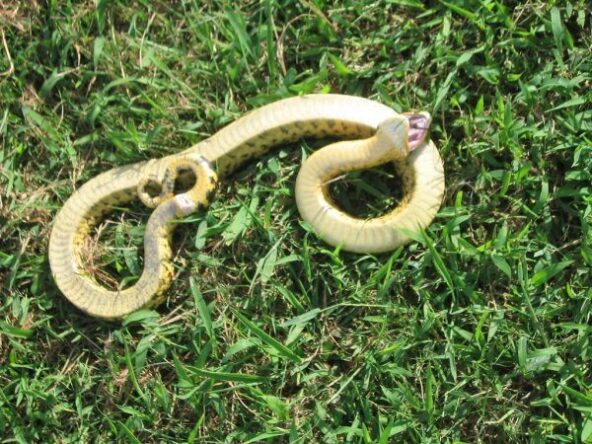
Just when you thought snakes couldn’t get more terrifying, North Carolina officials sent out a warning to summer park-goers about “zombie snakes.”
“Instead of watching clouds to see if we can keep weekend weather on track, let’s play a game! Who is this ‘famous’ NC snake? A cobra? A zombie snake? It’s a harmless one,” the North Carolina State Parks and Recreation account posted to their page.
Um, how about we play a game called “stay inside” if those are the options.
Is the snake really a zombie coming back from the dead?
Thankfully, staying inside to avoid this snake isn’t really necessary, as it’s not in actuality a possessed snake rising from the dead. The hognose snake, also called “puff adder” or “spreading adder,” isn’t poisonous to humans but can display some pretty frightening reactions when it feels threatened by unsuspecting outdoor pleasure-seekers.


According to Amphibian and Reptiles of North Carolina, “When threatened, hognose snakes hiss loudly and spread their necks like cobras do, resulting in the nicknames ‘puff adder’ or ‘spreading adder.”
“They rarely bite during these displays, but they may strike repeatedly,” they continued. And that urban myth about their breath being venomous? Florida Museum experts assure everyone, “In truth, its breath is harmless.”
Whew!
The hobnose snake can be found from Florida and Texas to Minnesota.
They go on to say it’s the hobnose snake’s other defense mechanism that gets them the nickname “zombie snake.”

“If the antagonist continues, the hognose snake will feign death by opening its mouth, rolling over on its back, and writhing around. If turned over onto its belly, it will immediately roll again onto its back.”
By that description, and not being in the vicinity of a zombie snake, the non-venomous reptile’s antics sound almost endearing. Or truly terrifying.
Either way, happy summer snake-watching!
More About:TV Shows
